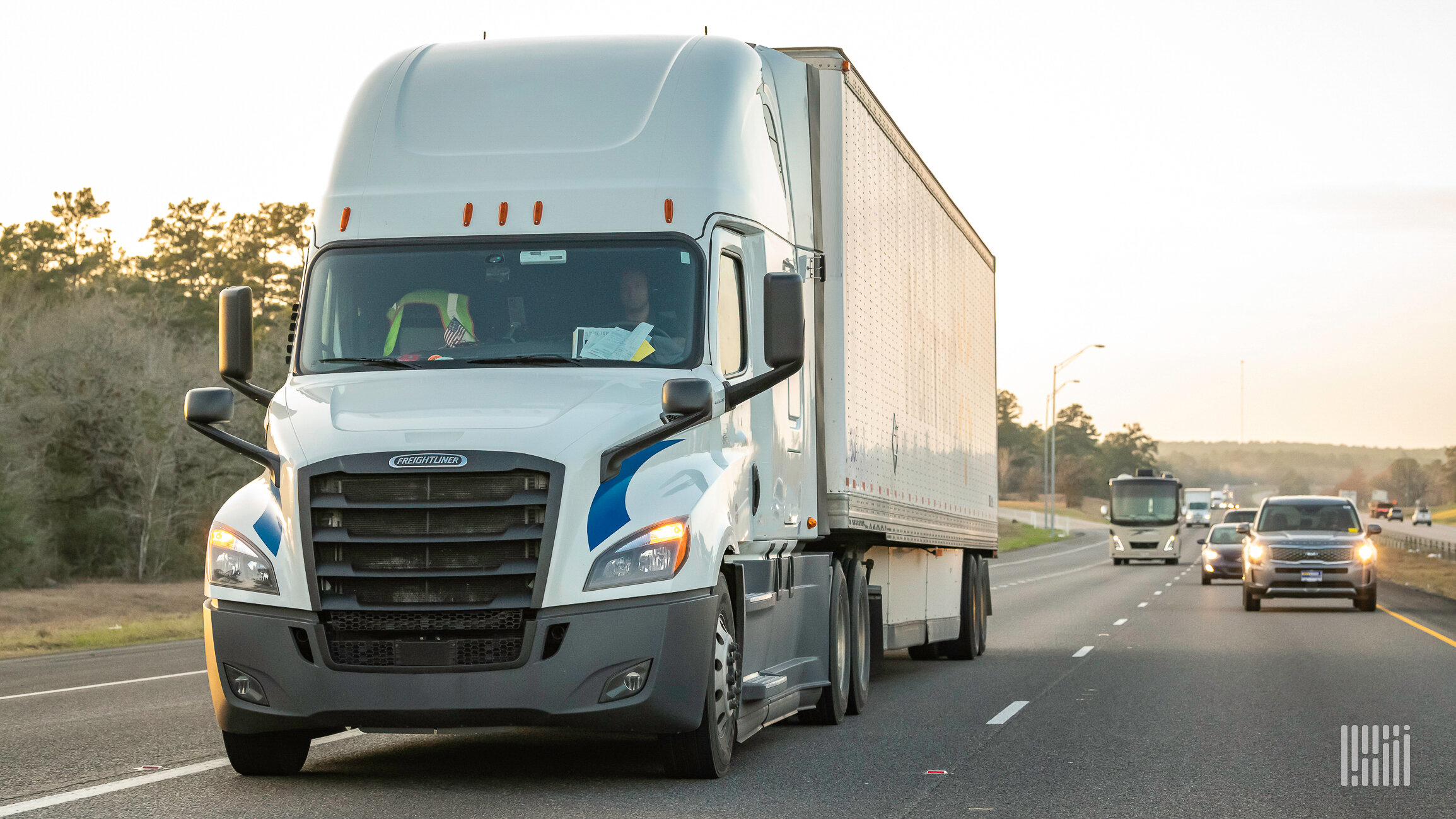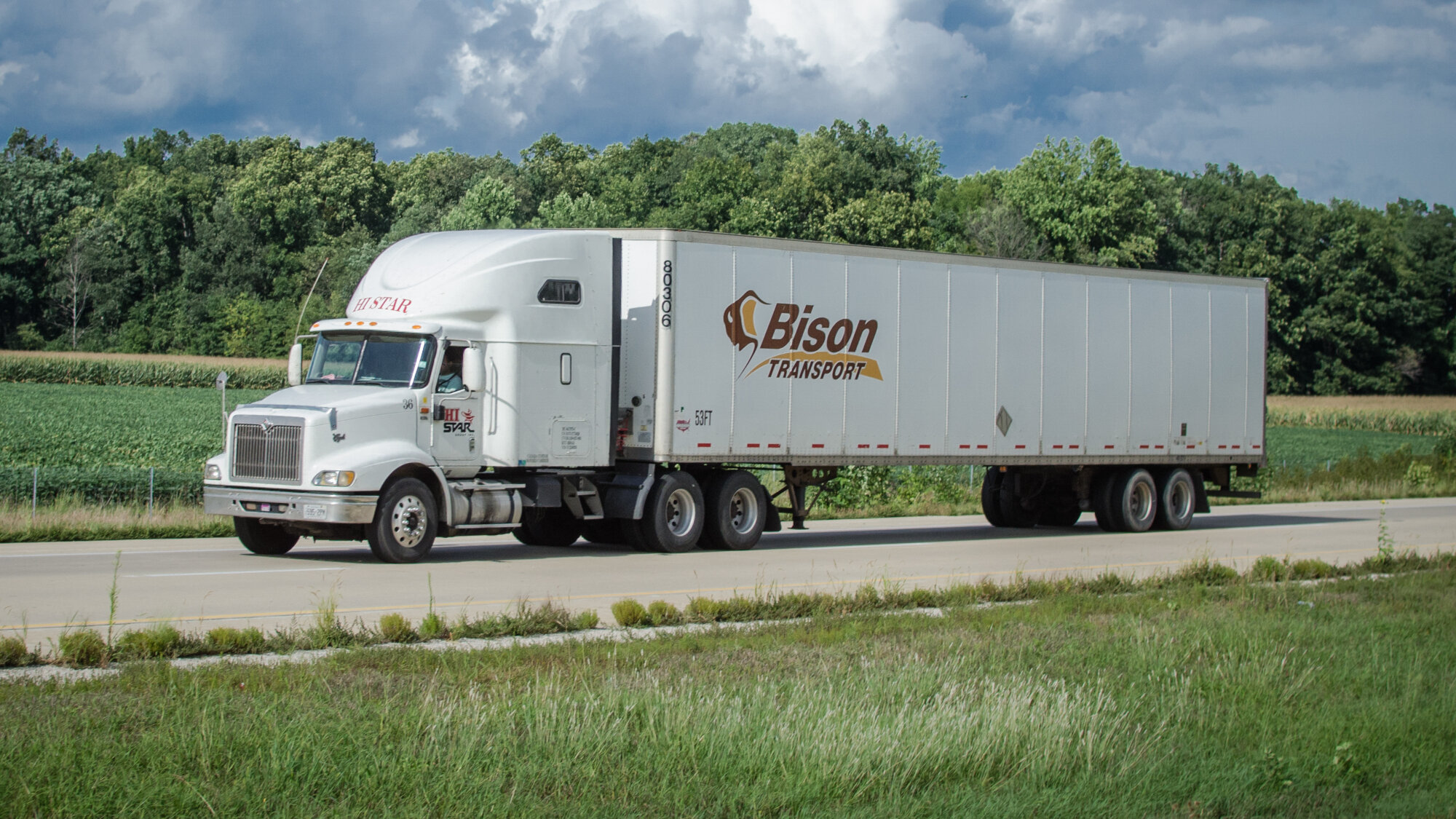
(Photo: Jim Allen/FreightWaves)
Class 8 truck orders in July reached 20,000 for the first time in six months as growing freight demand created a need for more equipment despite economic uncertainty over the coronavirus pandemic.
FTR Transportation Intelligence reported a 28% month-over-month increase. It pegged the rolling 12-month average for orders at 168,000, up from 159,000.
“The order activity for both June and July was more robust than expected and is good news for the equipment producers,” said Jonathan Starks, FTR chief intelligence officer. “However, despite the increasing orders, FTR still expects the Class 8 market to maintain a slow, steady recovery.”
ACT Research reported 20,300 preliminary Class 8 net orders in North America. That was up 27% from June. July orders were 98% higher than the same month in 2019.
“The context of rising [freight] rates and improving carrier profits adds perspective to what is now occurring in Class 8 orders: Supply matters,” said Kenny Vieth, ACT president and senior analyst. “With many drivers (and trucks) sidelined, there is now insufficient available capacity for rebounding freight volumes.
“There is a strong relationship historically between carrier profits and equipment demand.”
Increased quoting activity
Evidence of at least a temporary recovery is obvious to Rush Enterprises (NASDAQ: RUSHA). Rush is the nation’s largest group of dealerships selling new and used heavy- and medium-duty trucks.
“We’re seeing increased quoting activity, but our customers still remain somewhat hesitant due to uncertainty in both the COVID-19 pandemic and the upcoming elections,” W.M. “Rusty” Rush said on a July 24 conference call with analysts.
“Given where the freight business is right now … spot rates are probably getting back [to] as good as they’ve been in a couple of years,” Rush said. “That usually bodes well for rate increases down the road for our over-the-road customer.
On-highway trucks account for 70% of all the trucks sold, Rush said.
Tempering expectations
Better-than-expected orders must be tempered by economic realities, Starks said.
“The freight markets sustained a traumatic decline of volumes at the start of the pandemic. Consumer demand, on an absolute basis, will remain weaker as we deal with high levels of unemployment and a Congress that has been unable to foster a bipartisan solution to stimulate demand,” he said.
Vieth said July’s rebound preceded evidence of a shrinking economy.
“Less than a week ago, we learned the U.S. economy was 9.5% smaller in Q2 than it was in Q1 and 10.6% below its end-of-2019 level,” Vieth said.
“When the COVID began to bite in late February, there was a strong case to be made that the trucking industry was suffering from lingering overcapacity that was still putting downward pressure on freight rates, and by extension, carrier profitability.”




















